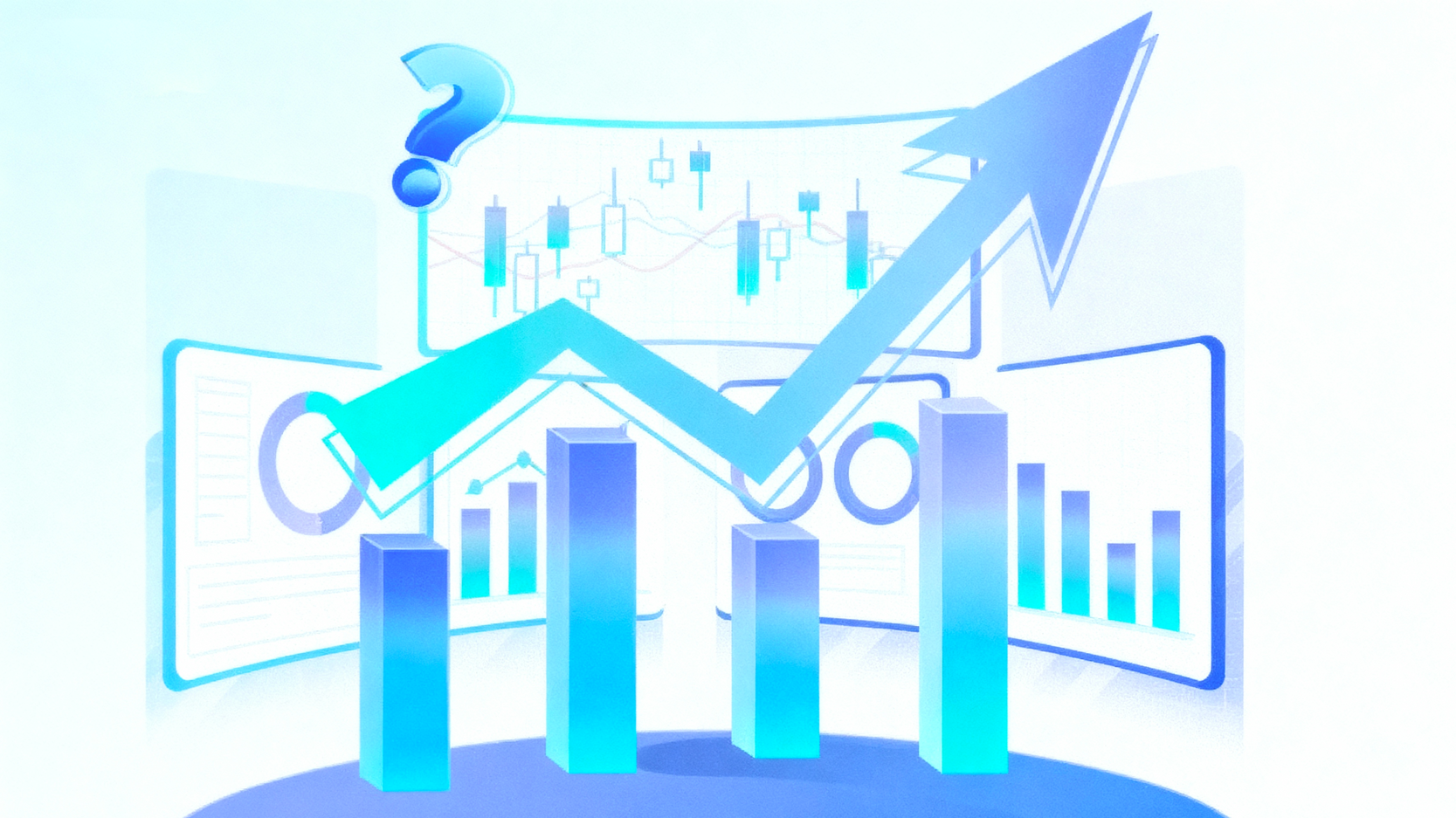High-Frequency Trading Guide: Strategies, Platforms & Costs
The Ultimate Guide to High-Frequency Trading: Complete Analysis of the Latest Strategies, Platform Selection, and Cost Control
Are you fascinated by High-Frequency Trading (HFT), where profits and losses are determined within milliseconds, yet feel hesitant due to its complex and high frequency trading strategies, high costs, and steep trading costs? Many investors are eager to profit from small market fluctuations through HFT but often overlook the critical importance of choosing the high-frequency trading platform and managing trading costs. This article provides a comprehensive analysis of HFT’s core strategies, a breakdown of various trading costs, and a practical guide to selecting the best trading platforms, helping you gain an edge in the high-speed financial battlefield.
What Is High-Frequency Trading (HFT)? Speed Is the Key to Profit
Imagine that in the blink of an eye, thousands of trades may have already been executed in the market. This is the world of high-frequency trading, a financial arena powered by advanced computers, complex algorithms, and ultra-high-speed network connections. Here, success depends not only on the quality of your strategy but also on who can execute faster.
Fundamental Definition and Operating Principles of High-Frequency Trading
High-Frequency Trading (HFT) is a trading model that uses advanced computer technology and algorithms to automatically execute a large number of buy and sell orders within an extremely short time frame (usually milliseconds or microseconds). Its core mechanism is built on three main pillars:
- 🤖 Algorithm: Predefined trading logic that automatically analyzes market data (such as price and volume) and triggers trade orders instantly when specific conditions are met.
- 💻 Computing Power: Requires top-tier hardware to run complex algorithms and process massive amounts of market data in the shortest possible time.
- ⚡ Low Latency: This is the soul of HFT. The time difference between when a trading order is sent and when it is received and executed by the exchange must be minimized to the extreme. To achieve this, HFT firms even place their servers directly inside exchange data centers, (a practice known as hosting or co-location).
Simply put, HFT allows computers to replace human decision-making, using machine-level speed to capture tiny profit opportunities that human traders could never detect.
Why Is High-Frequency Trading So Important in Modern Financial Markets?
Although HFT has been subject to some controversy, it has become an indispensable part of today’s financial markets, playing several key roles:
- Increasing market liquidity: HFT firms, especially those using market-making strategies, place large numbers of buy and sell orders simultaneously, providing sufficient counterparties for other market participants. This makes transactions easier to execute and reduces trading costs.
- Narrowing bid-ask spreads: Due to intense competition among HFT firms, they continuously compress the gap between bid and ask quotes, meaning ordinary investors can trade at fairer prices.
- Enhancing price discovery efficiency: HFT can quickly react to the latest market information and reflect it in asset prices, helping market prices more accurately and promptly reflect their intrinsic value.
However, HFT has also been criticized for its potential to trigger “flash crash” events, leading regulators around the world to subject it to closer scrutiny.
Revealing the 3 Major High-Frequency Trading Strategies and Examples
The world of high-frequency trading is not merely about speed; it is supported by a high-frequency trading strategy supported by precise calculations. Understanding these strategies is key to grasping how HFT generates profits. The following are the three most common types of strategies.
Market-Making Strategy: Providing Liquidity and Earning the Spread
This is the most classic and widely used HFT strategy. Firms executing this strategy act like “dealers” in the market, simultaneously placing buy (Bid) and sell (Ask) orders for a particular financial instrument, such as stocks or forex.
- Profit Model: The profit mainly comes from the small difference between bid and ask prices, known as the “spread”. For example, a market maker might buy at 100.01 and sell at 100.02, earning a 0.01 spread on each completed trade.
- Operational Core: The key to success in this strategy lies in conducting a massive number of trades. Although the profit per trade is minimal, the accumulated returns from executing thousands of trades per second can be substantial. At the same time, market makers must precisely manage their inventory risk to avoid losses caused by significant one-sided market movements.
Statistical Arbitrage Strategy: Capturing Profit Opportunities from Price Inefficiencies
Statistical arbitrage relies on complex quantitative models to identify temporary price discrepancies between correlated financial instruments and profit from them. This HFT strategy is not about finding risk-free arbitrage but about exploiting statistically high-probability setups.
- Profit Model: For example, an algorithm may detect that the stock prices of Company A and Company B have historically moved in the same direction 95% of the time. If one day Company A’s price rises while Company B’s remains unchanged, the algorithm predicts that B’s price “should” follow. It then automatically buys B’s stock while possibly shorting A’s stock to hedge risk, closing both positions when their price relationship returns to normal and capturing the profit.
- Operational Core: Strong data analysis and backtesting systems are essential to build and validate such models. Speed is equally critical here, as these pricing inefficiencies often exist for only a few seconds or even less.
Event Arbitrage Strategy: Rapid Positioning on Major News Events
This strategy focuses on profiting from sharp market movements triggered by major news releases or economic data announcements. While human traders may take several seconds to read, interpret, and place an order after seeing the news, an HFT system can complete all these actions instantly at the moment of release.
- Profit Model: For example, when the Federal Reserve (Fed) announces an interest rate cut, an HFT algorithm can use Natural Language Processing (NLP) technology to read keywords in the press release within milliseconds, determine whether the news is bullish or bearish for the market, and immediately execute the corresponding trade,positioning itself ahead of most market participants.
- Operational Core: The key lies in both the speed of information acquisition and interpretation. HFT firms spend heavily on ultra-low-latency news feeds and develop algorithms capable of rapidly understanding textual semantics.
High-Frequency Trading Cost Analysis: It’s More Than Just Fees
For HFT, profits are achieved through “tiny margins” multiplied by “massive volume”. As a result, cost control in high-frequency trading is extremely stringent. Even the slightest difference in cost, when multiplied across millions of trades, can become the decisive factor between profit and loss.
Direct Costs: Commissions, Spreads, and Platform Subscription Fees
These are relatively easy-to-calculate explicit costs that all traders are familiar with:
- Trading Commissions: Fees paid to brokers or exchanges for order execution. HFT firms typically leverage their enormous trading volumes to negotiate extremely low commission rates with brokers.
- Bid-Ask Spreads: The difference between the buying and selling prices, representing an inherent trading cost. One of HFT’s goals is to capture price movements larger than the spread itself.
- Platform Fees: Monthly or annual fees paid to use specific high-frequency trading platforms or software. These professional-grade platforms often come at a considerable cost.
Hidden Costs: The Impact of Latency and Slippage
These are the most critical hidden costs in the HFT world, and the traps most easily overlooked by beginners.
- Latency: Refers to the time it takes for your trading order to travel from your computer to the exchange and be executed. In the high-frequency world, even a few microseconds of delay can cause your order to fall behind competitors’, resulting in missed opportunities for the best execution price. This is why HFT firms are willing to pay high fees to place their servers right next to the exchange.
- Slippage: Refers to the difference between your expected execution price and the actual price at which your order is filled. Slippage becomes particularly evident during rapid market movements. When your order arrives late due to latency, the original optimal price may already be gone, leading to higher execution costs or even failed trades. For HFT strategies that rely on capturing tiny price spreads, slippage is one of the main factors eroding profitability.
Hardware and Information Costs: Co-location and Data Feed Fees
These are the entry tickets to HFT, and represent a significant upfront investment.
- Co-location: To minimize latency, HFT firms rent server racks from exchanges and place their trading servers directly inside the exchange’s data center. The rental cost for this service is extremely high, but for HFTs pursuing ultimate speed, it is a necessary expense.
- Data Feed Fees: HFT relies on the most real-time and raw market data, not the delayed data typically available to retail traders. Exchanges charge substantial fees for access to these “direct data feeds” to guarantee both the quality and speed of the information.
How to Choose the Best High-Frequency Trading Platform? 5 Key Evaluation Criteria
Selecting the right high-frequency trading platform is a prerequisite for HFT success. It’s not just about finding an order placement tool, it’s about building a complete, efficient, and stable trading ecosystem. The following are the five core criteria that must be considered when evaluating a platform.
Criterion 1: Ultra-Low Latency Execution Speed
This is the top priority for any HFT platform, without exception. What you need to focus on is the platform’s “end-to-end latency”, which measures the time from when an order is received to when it is fully executed. A high-quality platform will disclose its average execution speed and offer co-location options, allowing your trade orders to reach the exchange via the shortest possible physical route.
Criterion 2: Stable and Powerful API Interface
HFT is not about manual mouse clicks, it operates through automated programs. Therefore, the platform must provide a stable, high-performance, and well-documented Application Programming Interface (API). A good API should feature:
- High throughput: Capable of handling large volumes of requests and trade orders within a short time.
- Low-latency response: The API must respond quickly and not become a bottleneck in the trading chain.
- Clear documentation and support: Comprehensive developer documentation and prompt technical support to help developers get started quickly and resolve issues efficiently.
Criterion 3: Transparent Fee Structure and Cost Efficiency
Given the significant impact of high-frequency trading costs on profits, a platform’s fee structure must be completely transparent. You need to examine all potential fees carefully, including commissions, data fees, API usage fees, and co-location fees. An ideal platform offers a tiered commission structure, the higher your trading volume, the lower the rate, which is especially beneficial for HFT.
Criterion 4: Supported Markets and Asset Classes
Your HFT strategy may need to span multiple markets (such as equities, futures, and forex) or various asset types. Therefore, it is crucial to confirm whether the platform supports the markets and instruments you require. A good platform should provide broad market access, giving your strategy more room to operate.
Criterion 5: Customer Support and Technical Service
In high-frequency trading, any system failure can lead to catastrophic losses. Therefore, the platform must provide 24/7 professional technical support. When issues such as API connection errors, data anomalies, or other technical failures occur, you need immediate access to specialists capable of resolving them, not just standard customer service staff.
Frequently Asked Questions (FAQ)
Can individual investors engage in high-frequency trading?
In theory, yes, but in practice, the barriers are extremely high. Individual investors find it difficult to afford the enormous costs associated with HFT, including top-tier hardware, co-location, dedicated network lines, and professional data feeds. Additionally, it requires exceptional programming and quantitative analysis skills to develop and maintain trading algorithms. As a result, HFT remains primarily the domain of institutional investors.
What Are the Main Risks of High-Frequency Trading?
The main risks include: model risk (when trading strategies fail or perform poorly under specific market conditions), technical risk (hardware or software failures, network interruptions, or API errors), regulatory risk (governments introducing new regulations unfavorable to HFT), and flash crash risk caused by extreme speed, which can lead to massive losses within a very short time.
Is High-Frequency Trading Legal? How Do Regulations Differ Across Countries?
High-frequency trading is legal in most major financial markets, as it is regarded as an important mechanism for providing market liquidity. However, regulatory attitudes and requirements differ from country to country. For instance, the US Securities and Exchange Commission (SEC) and the European Securities and Markets Authority (ESMA) have established specific rules to curb manipulative HFT practices (such as spoofing), and they require HFT firms to register and file reports to enhance market transparency and stability.
What Is the Difference Between High-Frequency Trading and Algorithmic Trading?
High-frequency trading can be seen as a specific subset of algorithmic trading. Algorithmic trading broadly refers to all trading activities that use computer programs to automatically execute strategies, which may operate over minutes, hours, or even days. High-frequency trading, on the other hand, refers specifically to algorithmic strategies that execute trades within milliseconds or microseconds and hold positions for extremely short periods.
Conclusion
In summary, successful high-frequency trading is the perfect integration of strategy, technology, and cost control. It is far more than a race for speed, it is a sophisticated battle of data analysis, risk management, and cost efficiency. After gaining a thorough understanding of various HFT strategies, you must carefully evaluate all high-frequency trading costs, including latency and slippage, and choose a low-latency, high-stability platform that aligns with your trading strategy. Though the path is full of challenges, for those who master these core elements, it is undoubtedly a fast track to the top of the financial market pyramid.
Related Articles
-
Which Exchange Is Best for Beginners? 2025 Beginner’s Guide and Exchange Recommendations Just stepped into the new world of cryptocurrency but already overwhelmed by the countless exchanges out there? When faced with the big question, “Which exchange is best for beginners?”, many people simply don’t know where to start. In...2025 年 11 月 17 日
-
Exchange Fund Transfer Procedure: Illustrated Guide to Deposits, Withdrawals, and Wallet Transfers New to the world of cryptocurrency but overwhelmed by the complicated fund operations? You often hear terms like “deposit”, “withdrawal”, and “fund transfer”, yet when it comes to actual operation, you worry that pressing the wrong button might...2025 年 11 月 17 日
-
Exchange API Application and Integration Tutorial: Understand API Trading Settings in One Article! Tired of watching the market all day and placing orders manually, only to miss the best entry and exit points? Want to implement 24/7 automated trading strategies through programming but don’t know where to start? This article...2025 年 11 月 17 日













